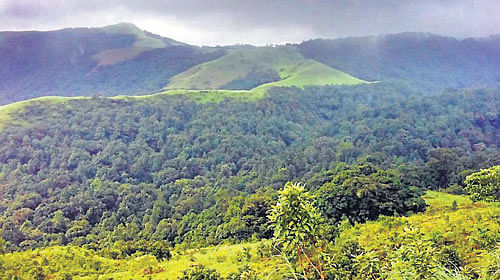Two recent inter-related developments in Karnataka took place recently. First the reported rejection of the Kasturiranagan report on inclusion of villages in the proposed Western Ghats’ eco-sensitive area by the state government and the other its continued reluctance to declare Kudremukh National Park as tiger reserve.
Both these are apparently due to public agitation against these proposals. They have once again brought into focus state’s reluctance to tackle such crucial and sensitive issues. The uncertainty being faced by the people living in WG’s critical forests, and environmental issues still remain as they are apprehensive about the final outcome and how the authorities would interpret the entire issue.
This also shows that on environmental protection issues, there is a disconnect between the states and the Union government. In fact, it has always been there and most of the problems being faced by people in this regard are a direct result of this. While the Centre, as a distant apex body, makes laws, it is the states, which as the custodian of the people and the resources, face the implementation related issues. This must be reversed immediately and averted at all costs.
The ecologically sensitive areas (ESA) in the WG are biodiversity-rich landscape and Kasturirangan panel, which was appointed to relook into original report of Madhav Gadgil that was dumped by the Centre in the wake of widespread outcry, had finally shrunk it to only about 37 per cent of entire WG covering six states from Kanyakumari to Gujarat. The ESA was reduced to 60,000 sq km as against original 1.29 lakh sq km identified in the Gadgil report.
Karnataka with almost one-third area of ESA in 1,500 villages falling under its ambit, is a major stakeholder and its reported rejection of entire proposal would seriously impact conservation of the WG. The WG forest covers are already down by more than 40 per cent in the last one century as pristine forests were diverted for agriculture, mega projects including housing and plantations.
Present forest covers in the WG are barely 87,000 sq km with the deforestation rate showing no sign of abatement as revealed by latest Forest Survey of India report which showed diversion of around 80 sq km of forest land.
A cabinet sub-committee has apparently taken note of the villagers’ outright rejection of the above proposal which means setting up of thermal plants, mining, hydro projects and other hazardous, environmentally unsustainable and polluting industries and mega projects etc would become permissible in these areas subject to restrictions in reserved forests, wild life sanctuaries and national parks.
It is true that the villagers are against the report as they perceive it to be an attempt to put unwarranted restriction on centuries-old traditional agro- horti –silvi-fisheries practices, apparently on sound ecological grounds.
Villagers cannot be blamed as they are worried about the ways of harassment of the system. It would have been good had there been a confidence building and public consultation exercise at the time of preparation of the reports of both the Gadgil and the Kasturirangan panels. Similarly, all the misgivings should have been removed earlier and before decision to reject the proposal was taken.
The state government should still make all efforts to engage all the stake holders in a dispassionate and conducive dialogue in order to save the WG which are state’s unique heritage with or without the UNESCO tag. This is now or never to save world’s one of the 12 mega bio diversity hot spots and it is earnestly hoped that the state government would not take any hasty decision on such a critical issue. When Kerala can accept 50 per cent of the Kasturirangan report as ESA, there is no reason why Karnataka cannot find a similar via media.
Kudremukh as tiger reserve
A related issue is that of Kudremukh National Park being designated as tiger reserve as per final approval of the National Tiger Conservation Authority. If the state government notifies it, this will bestow special status on this lush and unique national park to help in its overall ecological development and an increase in the tiger population.
It would also help 1,500 villagers living within the park, 400 of whom are ready
to move out of the forest since a decade but are stuck as the state does not have enough money for such a massive relocation. Tiger reserves provide budget for such voluntary relocation of villagers who choose to move out.
Simply put, the tiger reserve brings in more budget and focussed attention on the tiger-specific management practices in these forests in order to make it a tiger habitable area. As regards reports that there are only seven tigers reported in these forests, this number is not sustainable.
As the leading tiger state, it is incumbent on Karnataka to give as much push as possible for the conservation of the tiger. Here too, all the misgivings will have to be slowly removed from the minds of locals and they must be made partners in the whole exercise with due process of stakeholders’ consultations.
There is a big lesson to be learnt that no conservation effort would ever succeed unless local people who are the primary stake holders are taken into confidence. There is an urgent need to do so in both the above cases, for saving our environment is no more only an administrative convenience; it is a constitutional obligation of the state and the citizen under Directive Principles of the State Policy.
(The writer is former Principal Chief Conservator of Forests, Karnataka)
